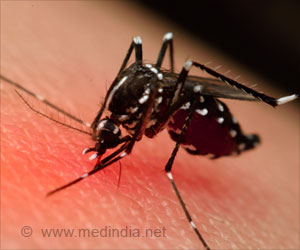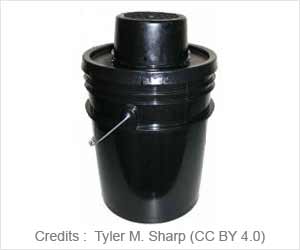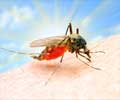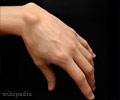Chikungunya virus causes chronic joint pain. The mechanism by which chikungunya virus causes chronic joint pain has been deciphered using a new reporter system. This novel tool detects and isolates cells harboring viral RNA long after the initial infection.
- Chikungunya virus infection causes severe chronic joint pain that lasts for months to years
- A newly developed reporter system can detect and isolate cells harboring viral RNA long after the initial infection
- This could lead to the development of novel therapies for controlling the chronic, painful, inflammatory condition
The study, published in PLOS Pathogens, was led by Dr. Deborah Lenschow, MD, PhD, who is an Associate Professor of Medicine in the Division of Rheumatology at Washington University School of Medicine in St. Louis, USA.
Read More..
Chikungunya and its Complications
Chikungunya derives its name from the Swahili word “kungunyala”, which literally means “that which bends up”, referring to the stooped and contorted posture exhibited by chikungunya patients due to the excruciating joint pain caused by the infection.Chikungunya is a mosquito-borne viral disease that is spread by the bite of Aedes mosquitoes. The three cardinal signs of chikungunya are fever, rash and joint pain, of which, the joint pain is the most severe.
In fact, approximately 30-60 percent of chikungunya patients suffer from persistent joint pain that lasts for months to even years after the initial CHIKV infection. The exact underlying cause of this persistent joint pain is unknown, as the virus is not found during the chronic phase of the disease.
What were the Findings of the Reporter System?
The research team developed a novel reporter system to elucidate the cause of persistent joint pain, despite the absence of any replicating virus during the chronic phase.The reporter system was used to permanently mark cells that survived CHIKV infection in a mouse model of chikungunya.
The research team found that the marked surviving cells included a mixture of muscle and skin cells that persisted for approximately 112 days after the initial infection. Blocking CHIKV infection by injecting a specific antibody into the mice significantly reduced the levels of marked cells in the muscle and skin. Importantly, the surviving marked cells harbored most of the persisting CHIKV RNA (ribonucleic acid).
These findings, taken together, indicate that muscle and skin cells are the primary targets of viral infection during both the acute and chronic phases of the disease.
Concluding Remarks
The authors indicate that the reporter system is a robust and powerful tool for detecting and isolating cells harboring viral RNA, which will help in closely studying the underlying mechanisms involved in chronic chikungunya disease.They are optimistic that uncovering these underlying mechanisms, could help to develop treatments and preventive strategies for controlling the chronic, painful arthritis experienced by the patients.
“Persistent CHIKV RNA can be detected in human and animal models but no one has been able to identify where the RNA resides due to insensitive techniques,” says Lenschow. “Using our reporter system, we have demonstrated that cells can survive CHIKV infection, and these cells harbor most of the persistent RNA. Since many believe that this persistent RNA contributes to chronic arthritis, this system will be a useful tool to study the mechanisms underlying chronic disease.”
Funding Source
The major funding for the study was from the National Institutes of Health. Subsidiary funding came from the National Institute of General Medical Sciences and Shriners Hospitals for Children - St. Louis, USA.Reference:
- Dermal and Muscle Fibroblasts and Skeletal Myofibers Survive Chikungunya Virus Infection and Harbor Persistent RNA - (https://journals.plos.org/plospathogens/article?id=10.1371/journal.ppat.1007993)
Source-Medindia















